HFMD (Malaysia) 2018 Guidelines – Parents Edition
With the recent outbreaks of hand, foot and mouth disease (HFMD) in Malaysia, we as parents should be wary of this disease itself.
In this guide, we will take a look at how to manage a child with HFMD.
This includes:
- HFMD symptoms to watch out for
- how a mouth ulcer in HFMD looks like
- treating and managing it correctly
- medications that can be used
- effective disinfectants
- feeding a child with HFMD
- criteria for hospital admission
- parental leave involved
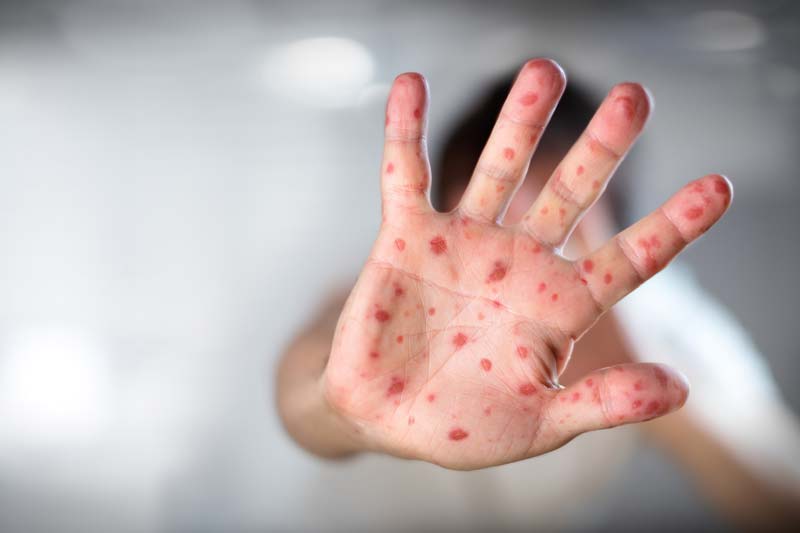
Be careful as HFMD is contagious.
What is HFMD?
HFMD is an infection caused by viruses.
It can affect both children and adults.
However, the younger a child is, the easier for him/her to get HFMD.
It presents with rashes on the:
- hands
- wrists
- feet
- mouth
- buttocks (occasionally)
The rash looks like a blister, filled with fluid in the middle.
A child with HFMD can be accompanied by a fever which commonly subsides within 1 to 2 days.
HFMD spreads through direct contact:
- nasal discharge
- saliva
- fluid from blisters
- stools
HFMD most contagious period is during the first week of illness.
If your child has been exposed to someone who has HFMD, watch out for symptoms in the next 3 – 5 days.
This period of 3 – 5 days is known as the incubation period.
We will talk more about it in the section below.
What are the HFMD symptoms in a child?
These are the common HFMD symptoms that a child may present with:
- fever
- feeling tired
- redness of the eyes
- muscle aches
- headaches
- loss of appetite
- loose stools
Symptoms you should look out for:
- worsening headaches
- vomiting
- drowsiness
- fits
- a weakness of the limbs
- minimal urine output
- breathing fast
- refuses to eat/drink
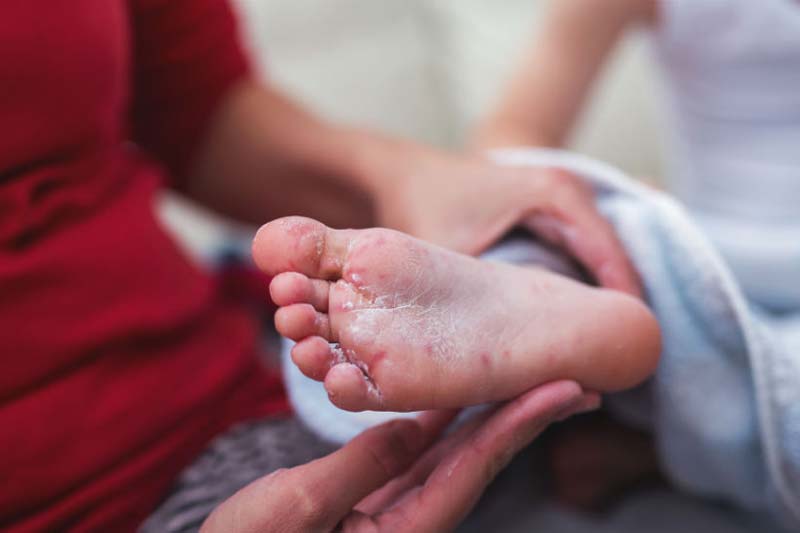
Fluid-filled blisters on the feet.
How HFMD ulcers in the mouth look like?
90% of HFMD cases present only with mouth ulcers.
So, it is important to be able to detect them early.
Here are the characteristics:
- They present on the soft part of the throat called the soft palate.
- Can also be seen on the tonsils and tongue.
- Each ulcer or blister is surrounded by a red ring.
- They appear on and around the lips too.
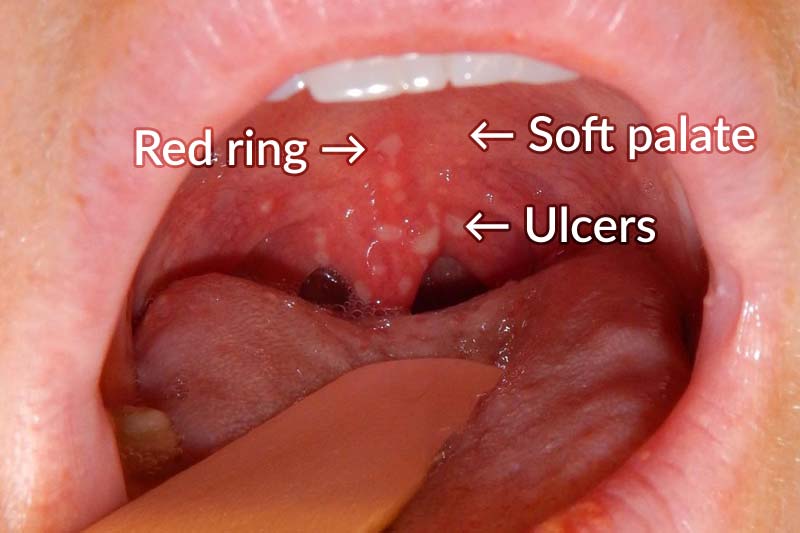
The location of HFMD ulcers in the mouth.
What is the HFMD treatment?
Like any other viral infections, recovery from HFMD takes some time.
There is no specific HFMD treatment that makes recovery faster.
Good thing is, most cases of HFMD are self-limiting and do not require any antibiotics or anti-virus.
However, you can use to take these measures to relieve symptoms such as:
- fever
- muscle aches
- headaches
- sore ulcers
- irritable rashes
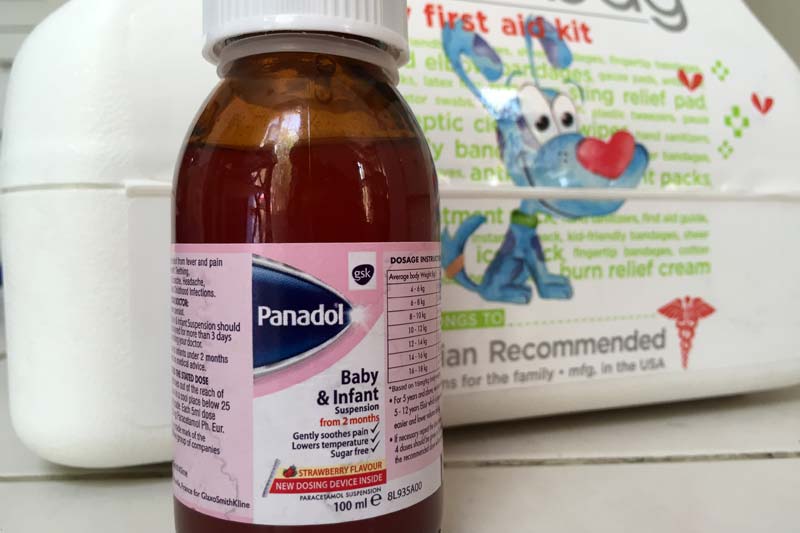
Paracetamol helps to reduce pain and relieve fever.
Using medications
These symptoms can be relieved using easily available medications from the pharmacy.
For children less than 12 years old, it is good practice to use the body weight or age to calculate the right dose.
Paracetamol:
- 10-15mg/kg every 6 hours
- also known as Panadol or Uphamol
- best used for fever or muscle aches
- not necessary to be taken if symptoms subside
Ibuprofen:
- 10mg/kg every 8 hours
- also known as Nurofen
- can be used together with paracetamol
- may trigger an asthma attack
- should be avoided in children with a background history asthma
- a stronger pain reliever compared to paracetamol
Cetirizine:
- 2.5ml twice a day (2 to 6 years old)
- 5.0ml twice a day (6 years old and over)
- also known as Zrytec
- suitable for itchy throat or rashes
Personally, I don’t fancy using ibuprofen as it has a higher risk of causing an allergic reaction.
You can purchase these medications over the counter from your nearby pharmacies such as Guardian or Watson.
Always consult the pharmacist in charge if you are unsure of the dosage. Please be safe, no harm asking.
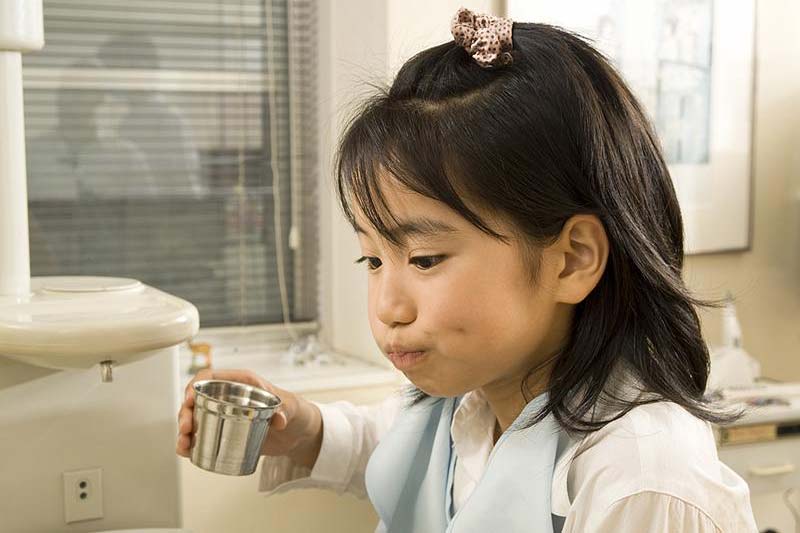
Gargling with salt water helps to reduce soreness in the mouth.
Using non-medications
Apart from medications, you can use these methods to help your child to feel better.
Saltwater:
- use saltwater for gargle to reduce soreness of the mouth ulcers
- dilute in lukewarm water
- as many times in a day as possible
Vaseline:
- helps to reduce soreness caused by the rashes
- able to retain moisture
Diaper cream:
- best used for rashes around the buttocks or thighs
- ones that contain zinc oxide work best
- apply a thick layer to reduce friction and discomfort
All being said and done, it is more important to:
- get your child to drink lots of fluids.
- wash your hands and feet (and your child’s) regularly.
- separate cups, spoons or other feeding utensils.
- throw away soiled diapers in a right manner.
- separate siblings temporarily (if possible).
- avoid poking the blisters.
- disinfect soiled clothes and toys.
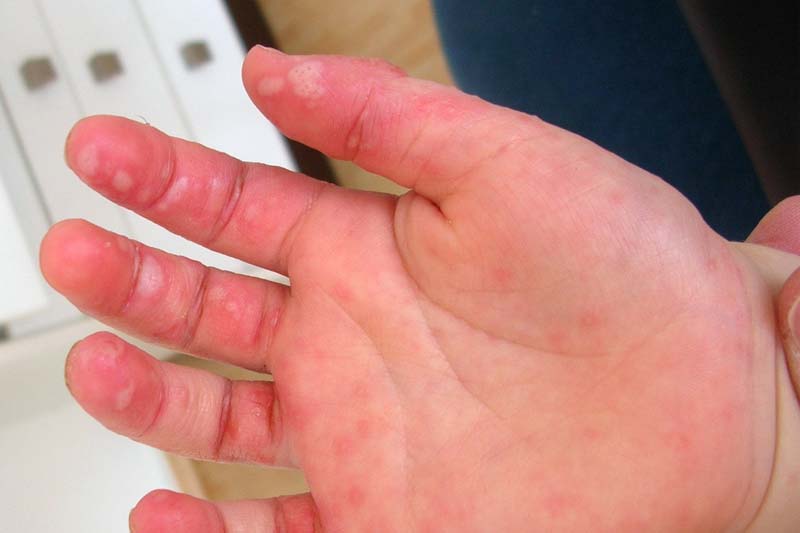
Blisters appearing on the fingers and palm.
How long is HFMD contagious?
The HFMD contagious period is between 2 days to 2 weeks.
It is most contagious during the first week.
And it may remain contagious up till the second week.
The best clue is to look at the blisters themselves.
If there are no new blisters forming and the current ones have all dried up, it’s safe to say that the infection has subsided.
If you want to send your child back to childcare centres or school, do this 3 fitness check first:
- measure the temperature to ensure there is no fever (<38°C).
- make sure all blisters have dried up.
- check the mouth for any ulcers present.
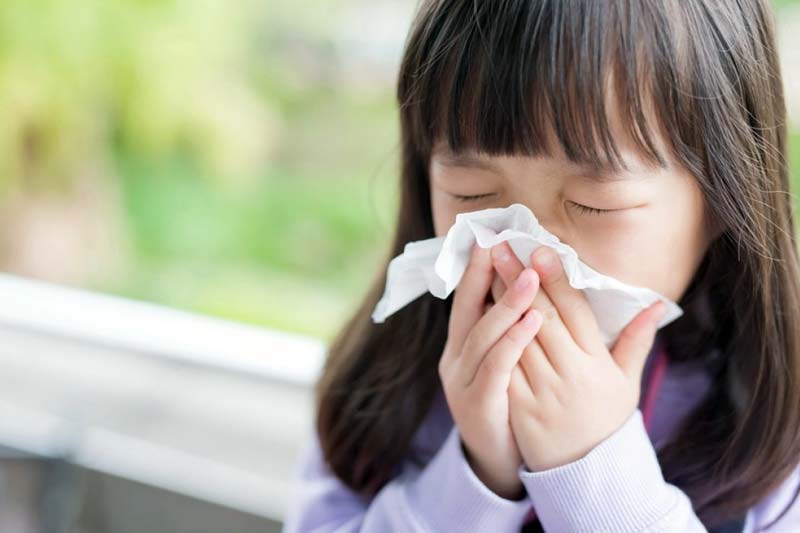
You can prevent the spread of HFMD by practising good hygiene.
Is HFMD contagious during the incubation period?
No, it is not.
As stated earlier, the incubation period is 3 – 5 days.
During this period, the virus lies dormant until it is ready to “hatch”.
It becomes contagious once the symptoms start to appear and remain contagious for up to 2 weeks.
Nevertheless, if you suspect that your child may have been exposed to HFMD, it is advisable to be on the lookout.
If any symptoms appear, get your child to stay home and be away from the childcare centre or school for the next 2 weeks.
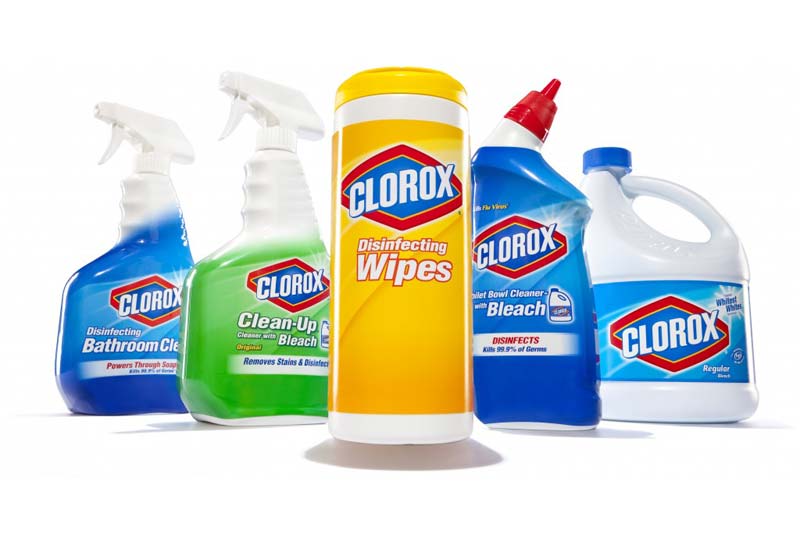
One of the more popular bleach agents.
What is the best disinfectant for HFMD?
Bleach.
You may have come across brands like Bleach by Tesco or Chlorox.
- First, wash the affected items with soap and water.
- Then disinfect the item(s) with bleach by mixing 1 tablespoon of bleach with 4 cups of water.
- Alternatively, you can use any cleaning agents that contain bleach.
Alcohol solutions or wipes are ineffective unless you use solutions/wipes with an alcohol concentration of >95%.
Even so, it cannot fully inactivate the virus causing HFMD.
Therefore, alcohol wipes, sprays or alcohol-based hand disinfectants alone is useless against HFMD.
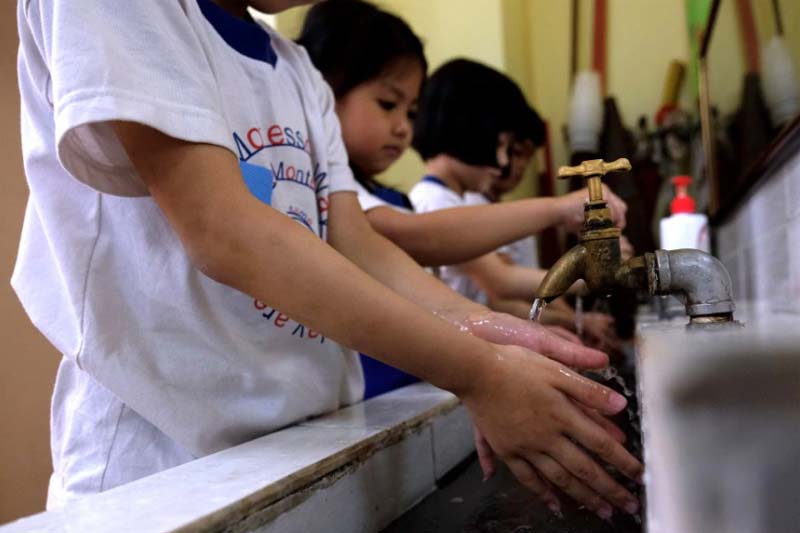
Keep your hands clean, all the time!
How to prevent HFMD?
Like the saying goes, prevention is always better than cure.
So, how can we actually prevent HFMD from getting to our children?
In general, it will require cooperation from all parties involved including:
- parents
- teachers
- kindergarten and nursery operators
- premise cleaners
- children
It starts from the very basic of maintaining personal hygiene:
1. Wash your hands
- After going to the toilet.
- Before and after food.
- After handling dirty and soiled clothes/diapers.
2. Do not share food/drinks
- Although sharing is caring, always remind your child not to share food/drinks if possible.
- Use your own utensils.
- Water tumbler for personal use.
3. Clean the toys
- Clean the toys with a bleach-like disinfectant such as Chlorox.
- Anti-HFMD sprays are generally ineffective (as stated earlier).
- Nursery toys should be cleaned regularly with bleach too.
4. Screening
- Nursery and kindergartens should have a screening protocol.
- Any child with a fever or unidentified ulcers, rashes or blisters should be sent home.
- Any staff with similar symptoms should not be allowed to work.
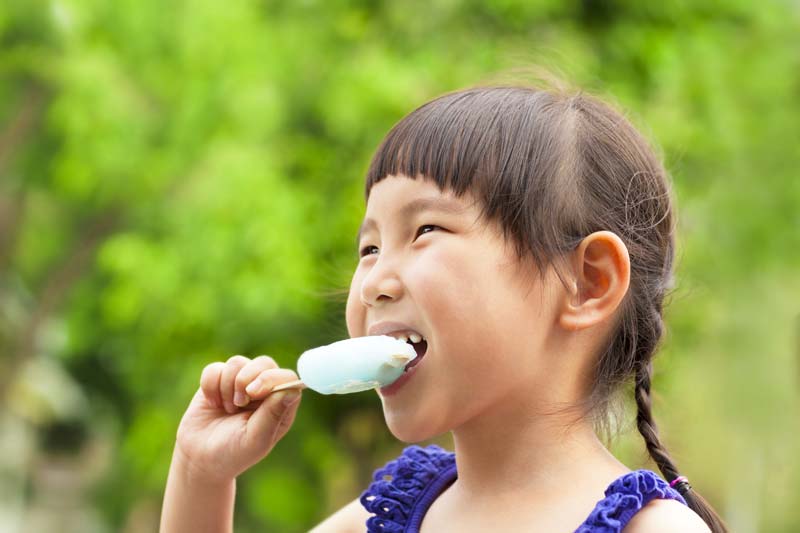
Chilled food helps to reduce mouth sores.
How to feed a child with HFMD?
This is a major concern for most parents.
Have you had a mouth ulcer before?
If you do, you sure know it feels when you try to eat/drink.
Getting a child with mouth ulcers to eat is a very difficult task, but it can be done.
Here’s what you can do:
- Cool the milk.
- Avoid giving warm/hot drinks.
- Use chilled teethers.
- Use pain-relief gels (eg. Medijel) for the mouth ulcers.
- Give soft diet like porridge instead of rice.
- For those with reduced appetite, give chilled fruits like watermelon or papaya as a temporary source of energy.
- Yoghurt is also a good alternative.
- Worst case scenario, ice cream.
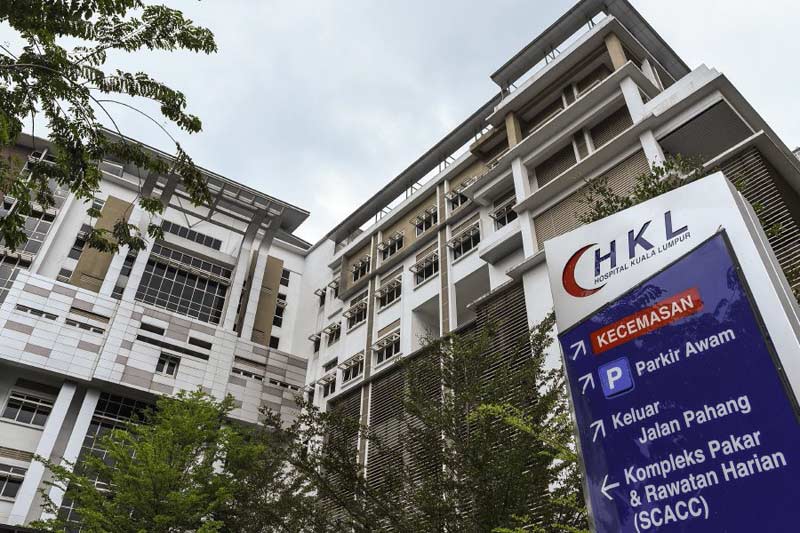
Admitting a child depends on the HFMD guidelines.
HFMD guidelines for admission in Malaysia
In most cases, a child recovers from HFMD without issues.
However, there are cases that a child needs to be admitted into the hospital for care and treatment.
So how do we know as parents?
The doctors in the hospitals have a set of guidelines to follow when it comes to admitting a child.
It will give an idea of when you should bring your child to the hospital too.
This is based on the HFMD guidelines set in Malaysia:
- the child is unable to tolerate any food/drinks.
- the child is very tired looking and weak.
- fever is persistent for more than 48 hours (2 days).
- the child is drowsy, confused or has fits.
- parents unable to cope with the child’s illness.
- inadequate family support at home to care for the child.
- the doctor suspects of a more serious disease.
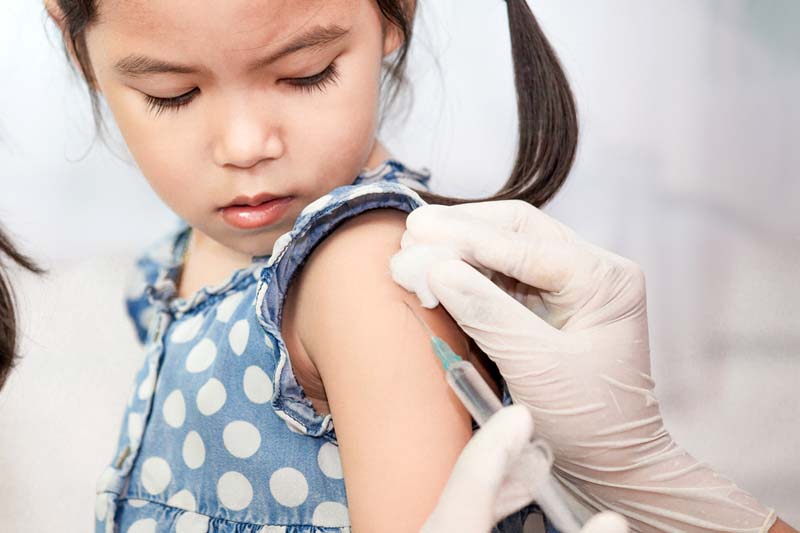
Wouldn’t it be great if you could vaccinate your child against HFMD?
Any HFMD vaccines in Malaysia?
In Malaysia, no.
There are HFMD vaccines available, but only in China at the moment.
Even so, these vaccines are not exactly practical.
Why?
HFMD is caused by different types of viruses but these vaccines protect against one only.
To simplify things, say we have virus Entero and virus Cox.
Both viruses cause HFMD.
The vaccines protect against Entero (a more dangerous one that can cause a really bad HFMD) but not against Cox.
However, Cox is the more common virus that causes a lot of mild HFMD among children.
Wouldn’t it be more beneficial (and logical) to have a vaccine that can protect against both Entero and Cox?
Unfortunately, there are no HFMD vaccines of that sort made available in Malaysia yet.
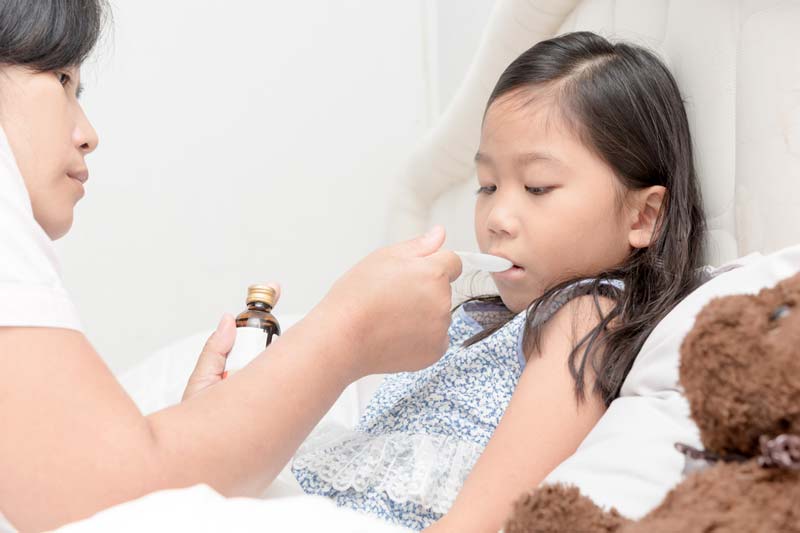
To care for a sick child is not an easy task.
HFMD parents quarantine leaves
If you are a working parent, then you should know that taking leaves when your child is sick is not easy.
For HFMD, although not mandatory, it is advisable to quarantine a child at home for at least a week.
With a limited amount of leaves in hand, this comes as a real headache.
However, there are parents quarantine leaves that you can take in certain circumstances.
Government sector
If you are working with the government, then you are in luck.
“For government staff, we have 5 days of quarantine leave, which is separate from the annual leave. Hence, this is not an issue for government staff.“
As mentioned by Penang’s State Health Committee chairman Dr Afif Bahardin.
Therefore, on top of your current amount of days of leave, you can apply for an additional 5 days to take care of your child.
Private sector
However, if you are in the private sector, you may want to apply for unrecorded/unpaid leaves with your employer.
Truth to be told, it’s easier said than done. And it is not exactly easy to apply leaves last minute.
Here’s what you can do:
- Get your parents or in-laws to help.
- Get your siblings to help.
- Apply for child care leave (if your company provides it).
- You and your spouse take turns to apply for leave.
- Take an emergency leave using your remaining days of leave.
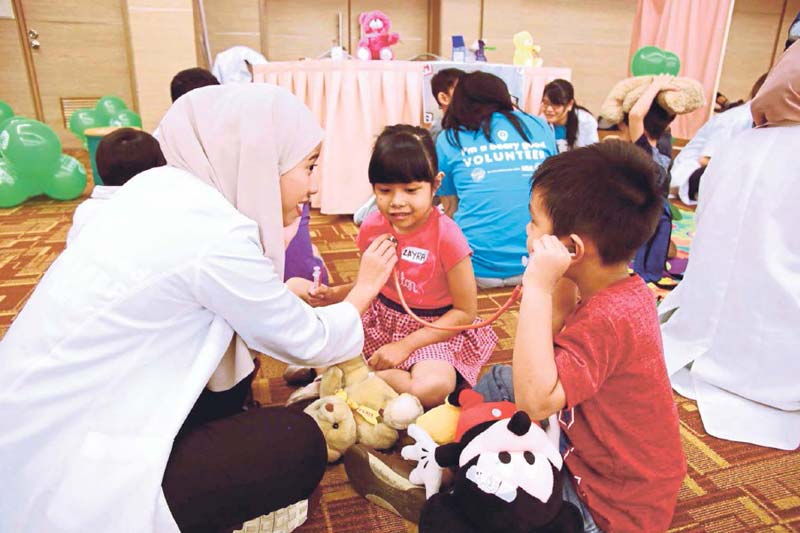
New cases of HFMD will be reported to the MOH.
An inquiry by Ministry of Health (MOH)
As long as you have brought your child to a doctor for HFMD, it is compulsory by law for the doctor to notify the case.
It does not matter if it is a suspected case or a confirmed one, it has to be notified.
When that happens, just get ready these details as the health authorities may just call you:
- the particulars of your child
- the HFMD symptoms your child presented with
- the duration of the sickness
- what treatment was given to your child
- details of admission into the hospital (if any)
- your child’s travel history for the last 2 weeks
- any contacts with other children with similar symptoms
- name of the childcare centre or school
- contact numbers if available
Now, if you have any other questions in mind, don’t be shy to ask.
Did your child have HFMD?
Share with us your experience in the comments below!
References:
- Hand, Foot and Mouth Disease (HFMD) Guidelines | Ministry of Health Malaysia
- Hand, Foot and Mouth Disease | Ministry of Health Singapore
- Hand, Foot and Mouth Disease | CDC
- Efficacy of alcohols and alcohol-based hand disinfectants against human enterovirus 71 | PubMed
- Enterovirus 71 infection and vaccines | PubMed

Leave a Reply
Want to join the discussion?Feel free to contribute!